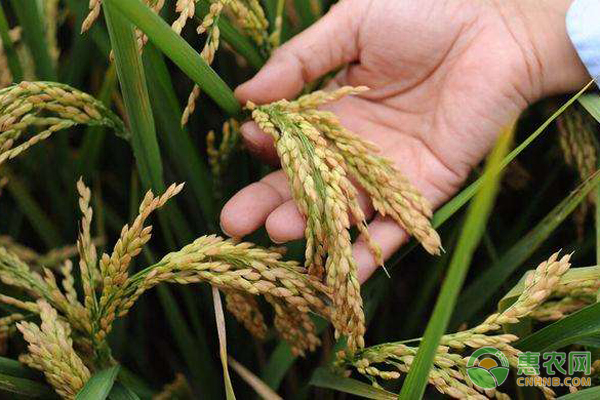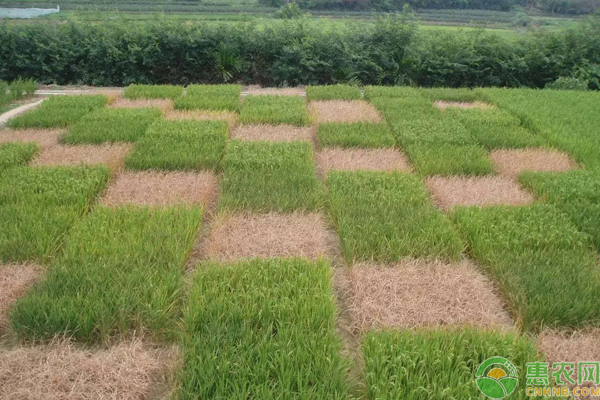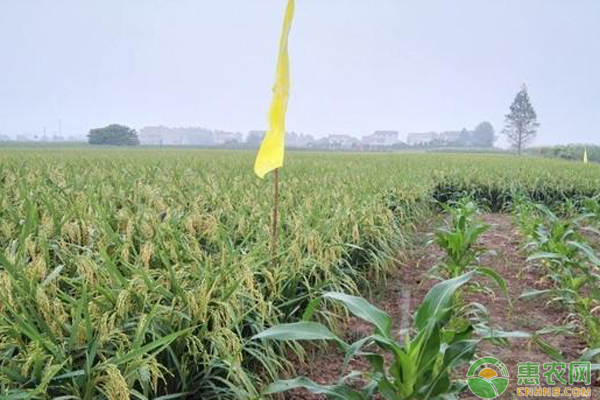Water-saving and drought-resistance rice WDR refers to a new type of rice that has both high-yield and high-quality characteristics of rice and water-saving and drought-resistant characteristics of upland rice. Water-saving and drought-resistant rice can save more than 50% of water in paddy fields, and can reduce the application amount of chemical fertilizers and pesticides. The yield and rice quality are equivalent to that of rice. In dryland cultivation, the drought resistance is equivalent to that of upland rice, which can stabilize production and increase income.

At this stage, the most popular promotion and application of water-saving and drought-resistant rice is the promotion and application of the water-saving and drought-resistant hybrid rice variety Youyou 73, which is jointly selected by Shanghai Agricultural Bio-gene Center and Shanghai Tiangu Biotechnology Co., Ltd., especially in Anhui. In the province, water-saving and drought-resistant rice has a certain scale. This paper takes the water-saving and drought-resistant rice drought excellent 73 as an example, and introduces its high-yield cultivation techniques for the reference of farmers:
In 2014, Ganyou 73 was approved by Anhui Province (examination number: Japonica 2014024), and it was planted in Hubei, Hunan, Anhui, Jiangxi, Shanghai and other provinces in the Yangtze River Basin, and performed well. In 2011, it was farmed by China Agricultural University. The College of Biotechnology conducted drought resistance identification, and in 2012, it was evaluated by the Shanghai Agricultural Biological Gene Center (2012) for drought resistance and two years of drought resistance. The results of the identification were all drought resistance grade 1.
1, timely sowing
Sowing in Hubei live before June 15th, if planted as a regenerative rice after the Ching Ming Festival (make sure to plant before April 20) can be planted. The amount of seed used for dry live broadcast is 4 kg, the amount of water used for live broadcasting is 3.5 kg, and the amount of seed used for throwing acre is 3 kg. After planting the cover soil, the rice is sprayed with 33% pendimethalin EC 100-150 ml and water 30-50 kg before use. The amount of the drug is used to control the annual grass, broadleaf and sedge, and the soil is used. Closed weeding; three-leaf one-heart period with 10% Han Qiu good EC100 ~ 150 ml (mu dosage, mainly used to control weeds, thousand gold, crabgrass, tendon grass, especially for the prevention of horse and cattle tendon performance Especially prominent) + chloroflupiric acid 50 ml (mu dosage, mainly used to control broadleaf weeds) for stem and leaf treatment; in the later stage, weeds can be manually removed.

2. Field management - water
Seedling stage: If the soil is not well-informed, it should be timely irrigated after sowing to ensure sprouting, prevent emergence of seedlings, large and small seedlings and prolong the growth period due to late emergence.
Booting stage: Rice at the booting stage and the stage of filling milk is most sensitive to moisture. It is necessary to ensure that the relative humidity of the soil is above 80% to ensure high yield.
3, field management - with fertilizer
The base fertilizer accounts for 70-80% of the total fertilization amount, and the general base fertilizer application compound fertilizer (N15: P15: K15) is 25-30 kg. The field with insufficient soil fertility can increase the fertilization amount appropriately;
Topdressing: 5-8 kg of urea is applied to the jointing period to the jointing stage. It is recommended not to apply the ear fertilizer. In the later stage, there is usually no need for topdressing
4. Field management - pest control
Pay attention to the prevention and control of pests such as aphids, rice planthoppers, rice blast, and sheath blight. Before the heading, 300ml (mu per medicinal amount) of Jinggang·Bacillus subtilis was used to control rice false smut and sheath blight. In particular, rice smut is easy to control, and the whole field is divided into two doses: the first time when more than one third of the whole stalk of the whole field is taken out, that is, when it is commonly called "big package" (from the time of emergence) About 5-7 days), this is the peak of the initial infection of the bacteria. At this time, the drug is used and the control effect is best. The second time is at the beginning of the rupture, and once again, the drug is used for consolidation. And to improve the control effect, it is recommended to use Jinggangmycin, chlorhexidine, Baoshenning and so on.
5. Water-saving and drought-resistant rice as a regenerative rice planting requires special attention to the following three points:
The first is to plant in Hubei before April 20, the second is to reserve 35-45cm when harvesting, and the third is to apply two times to regenerate fertilizer (20-30 kg twice).

The above is the introduction of the technical points of water-saving and drought-resistant rice cultivation and management. Water-saving and drought-resistant rice is different from ordinary rice. It has the characteristics of water saving and drought resistance. It can meet the key cultivation points of water shortage. Farmers can cultivate according to their own geographical area.
Edta Salts,Disodium Edta Powder,Ferric Sodium Edta Trihydrate,Iron Sodium Edta Trihydrate
Wuxi Yangshan Biochemical Co.,Ltd. , https://www.yangshanchem.com